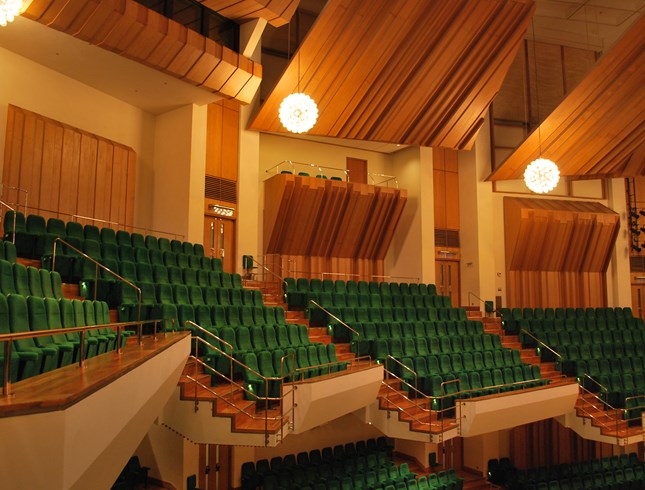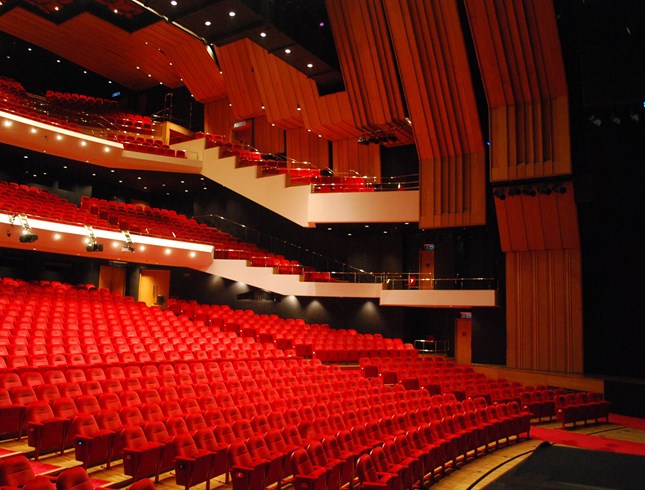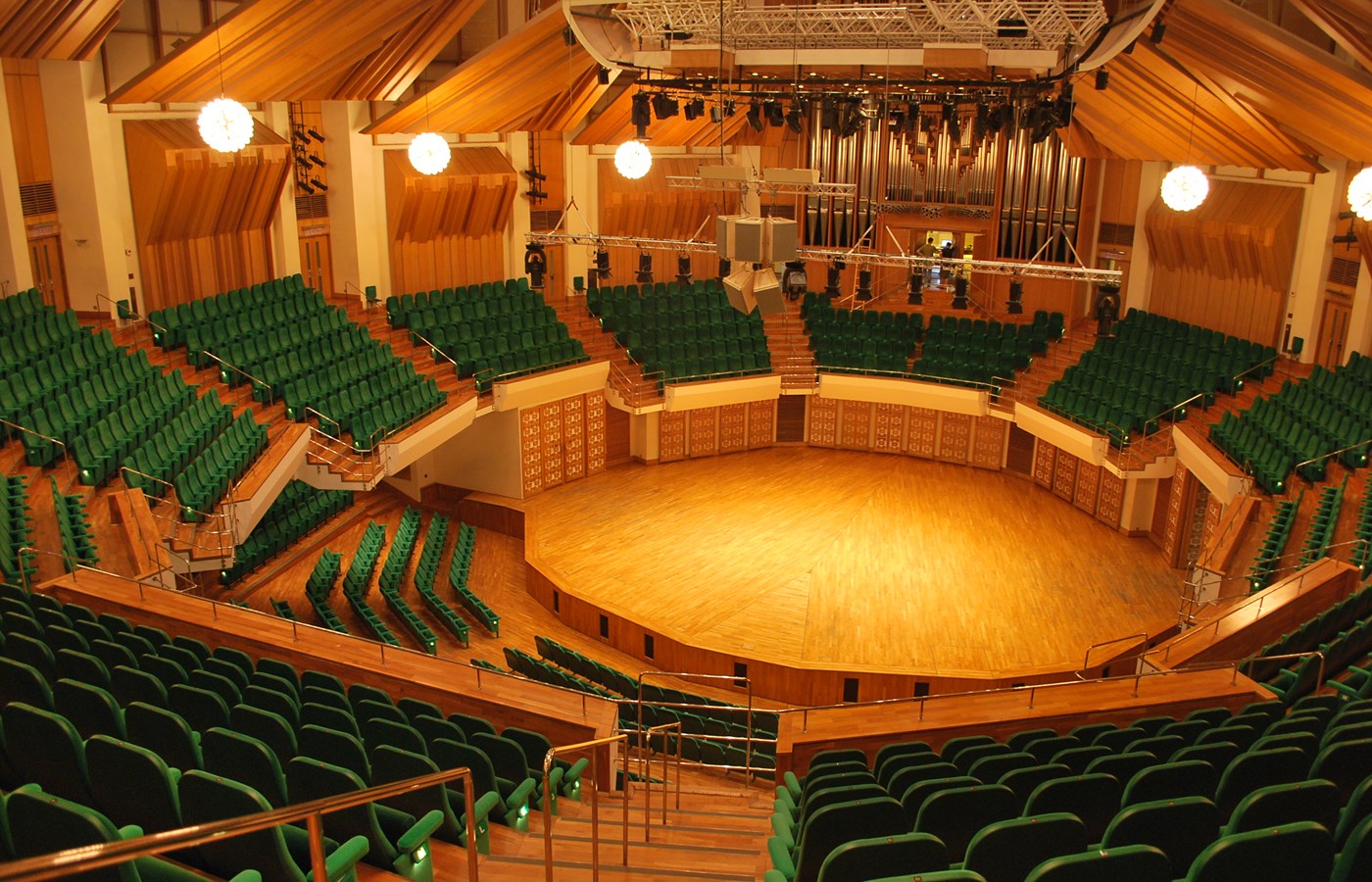Client
Urban Council, Hong Kong
Location
Hong Kong
Completion date
1989
The Hong Kong Cultural Centre (Tsim Sha Tsui Cultural Centre) opened in 1989. It contains three performance spaces: The Concert Hall, 2000 seats, The Grand Theatre, 1700 seats (a full scale Opera House) and a 500 seat experimental theatre.
The Concert Hall was modelled on the Christchurch Town Hall but with further refinements and significant improvements in design techniques. Since these were specialised spaces, Marshall Day Acoustics had the opportunity to tailor the design of each room to its specific functions.
The Grand Theatre was to have the high early energy ratio needed for clarity with a full reverberation time to support the singers, while the Concert Hall was to be provided with reflector arrays aimed at producing similar sequences in the main floor as in the balconies. To overcome some seat-to-seat differences experienced in earlier halls based on this reflector array design concept, the principal reflector surfaces are divided - the lower part reflects into the main floor while the upper part reflects with approximately the same delay into balcony seats in the next-but-one balcony.


As with many of Marshall Day Acoustics' projects, one sees the ensemble of architectural and acoustical intentions. This gives rise to a degree of asymmetry in the balconies at the rear which also images the asymmetry of orchestral radiation.
The Concert Hall houses an 8,000-pipe organ, one of the largest in Asia, built by Rieger Orgelbau.
At that time, under a post-doctoral program, a hybrid modelling technique was developed in the Acoustics Research Centre - MIDAS. This is a user-friendly digital data acquisition suite of programs for obtaining the impulse response of halls - any enclosure from small-scale acoustical models (1:50) to full size. That system was used by MDA in the design process and in the commissioning measurements on completion of the Hong Kong Cultural Centre.
